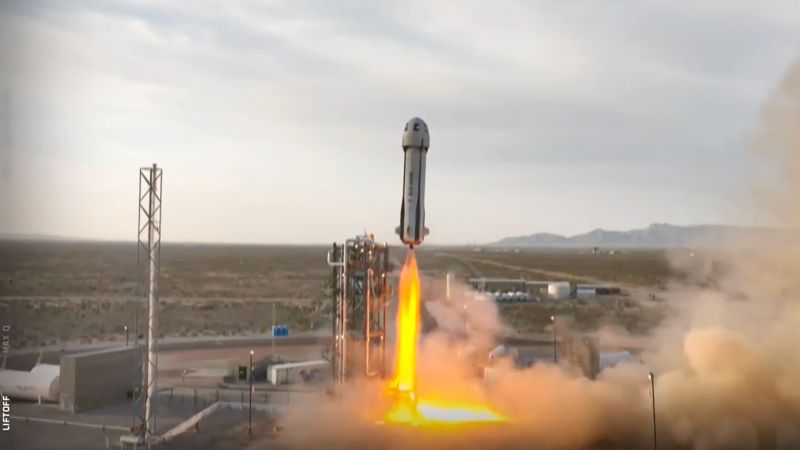Blue Origin has advertised its rides to space as a surefire way to secure “astronaut” status, saying in one 2021 social media post that “none of our astronauts have an asterisk next to their name” — part of a subtle dig at Virgin Galactic, whose flights so far have reached a lower altitude of about 88.5 kilometers (55 miles).
Katy Perry is also personally claiming the label, telling Elle magazine that the all-female crew on today’s mission is “going to put the ‘ass’ in astronaut.”
Defining an astronaut, however, is pretty much in the eye of the beholder.
In the early days of spaceflight, the US government established a 81-kilometer (50-mile) altitude as a basis for awarding astronaut badges to military and NASA pilots.
The Federal Aviation Administration has also given out commercial astronaut wings to private-sector adventurers who reached higher than 81 kilometers (50 miles). But the agency mostly did away with that program in 2021, opting to list participants on its website rather than award physical badges to private-sector fliers.

Meanwhile, the Swiss-based Fédération Aéronautique Internationale, or the World Air Sports Federation, views space as beginning at the 100-kilometer Kármán line, which today’s Blue Origin flight will surpass. (The organization doesn’t track “astronauts” but does catalog record-setting spaceflights.)
SpaceX has also awarded its own set of silver wings to nongovernment passengers who fly on its orbital Crew Dragon capsule. Blue Origin and its chief competitor, Virgin Galactic, do the same.
So, in practice, deciding who is and isn’t an astronaut is up to the recordkeeper.
For the record: Former NASA astronaut Terry Virts told National Geographic in 2018 that he was not too concerned with gatekeeping the” designation.
“If you’re strapping your butt to a rocket, I think that’s worth something,” Virts told National Geographic in 2018.

